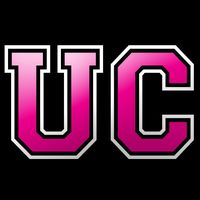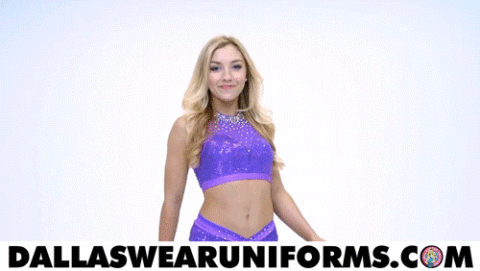NY Times: Suzanne Mitchell, Who Made the Dallas Cowboys Cheerleaders a Global Brand, Dies at 73

“Obviously we don’t put the girls in those uniforms to hide anything,” Suzanne Mitchell told Sports Illustrated in 1978. Credit Dallas Morning News
Suzanne Mitchell, who replaced a squad of high school bobby-soxers with a scantily clad chorus line that became a choreographed global brand called the Dallas Cowboys Cheerleaders, died on Tuesday at her home in Fredericksburg, Tex. She was 73.
The cause was complications of pancreatic cancer, her brother and only immediate survivor, W. W. Mitchell, said.
Ms. Mitchell was an administrative assistant to Tex Schramm, the Cowboys’ original president and general manager, when the team office was swamped with calls after one of its cheerleaders was captured winking suggestively — and uncharacteristically — into a television camera during the 1976 Super Bowl.
Maybe, Schramm figured, there was more to cheerleading than met the eye. He decided to capitalize on the emerging synergy between television and professional sports by enlisting performers on the sidelines to complement players on the field.
He designated Ms. Mitchell, a former public relations executive from New York, to transform the team’s fusty cheerleader squad. She proceeded to more than double its size, from 14; gave them skimpy new costumes; recruited a choreographer, Texie Waterman; and staged a photo session for a pinup poster.
She had created what would become a pop culture phenomenon. A new era in sports entertainment, branding and marketing had begun.
Declared the “most famous group of cheerleaders in the world” by Edward J. Rielly in his “Football: An Encyclopedia of Popular Culture” (2009), the Cowboys’ revamped cheerleading squad kicked off the 1978 season of “Monday Night Football” with a television special titled “The 36 Most Beautiful Girls in Texas.”

They went on to appear on the television series “The Love Boat” and in a commercial for Fabergé shampoo. They inspired two TV movies and a 1978 pornographic riff, “Debbie Does Dallas,” which prompted a lawsuit from team officials.
Ms. Mitchell’s original roster of cheerleaders was collectively included among Esquire magazine’s “75 Greatest Women of All Time,” along with Joan of Arc and Marilyn Monroe.
Distinguished by their white hot pants, short blue vests, exposed midriffs and white vinyl go-go boots, the Cowboys Cheerleaders (as well as the raft of copycats they inspired) delivered to football fans what one commentator described as “a little sex with their violence.”
“Obviously we don’t put the girls in those uniforms to hide anything,” Ms. Mitchell told Sports Illustrated in 1978. “Sports has always had a very clean, almost Puritanical aspect about it, but by the same token, sex is a very important part of our lives. What we’ve done is combine the two.”
What the Cowboys Cheerleaders started, Bruce Newman wrote in Sports Illustrated, “has spread through the rest of the N.F.L. like a social disease.”
“Which, of course,” he added, “is exactly what a lot of people think it is. But as Vince Lombardi almost said, ‘Sinning isn’t everything, it’s the only thing.’”
Up to a point: After all, this was the South, and, Ms. Mitchell said, “Tex wanted sexy ladies out there, but he wanted them, above all, to be classy.”
To guard against a backlash in the Bible Belt, applicants had to be 18 to 26 years old and respectable: a full-time student, or a wife and mother, or someone holding a full-time job. They were put through boot-camp training and Dale Carnegie personal development courses, originally paid $15 per game (before taxes), and barred from being seen in costume with alcohol, gum or cigarettes.
In the dressing room before each game, she told Texas Monthly in 2015, “we’d lock pinkies and say the Lord’s Prayer.”
The cheerleaders would also double as good-will ambassadors. Ms. Mitchell would accompany them on morale-boosting visits to hospitals and nursing homes, and to entertain troops abroad.
They were not without their critics. John Madden, when he was the coach of the Oakland Raiders, complained that the emphasis in sports coverage had shifted to “choreographers instead of coaches.” One reader complained to the advice columnist Ann Landers about the “older, sexier and more naked cheerleaders” being enlisted to energize spectators.
But Ms. Mitchell had ready responses.
“I would call after I’d get a letter and ask what the letter writer had been doing on Christmas Eve,” she was quoted as saying in “The Dallas Cowboys: The Outrageous History of the Biggest, Loudest, Most Hated, Best Loved Football Team in America” (2012), by Joe Nick Patoski. “Then I would tell them there were 12 girls who were in the DMZ in Korea performing in minus-20-degree weather serving their country.”
She continued, “When we’d go into a radar site or to a mess hall, I would tell the girls, ‘Now I want you to go and find the pimpliest, ugliest boy in this place, because he’s the one who needs you the most.’”
Suzanne Mitchell was born on July 7, 1943, in Fort Worth, to Willis Wilson Mitchell, a commercial pilot, and the former Nell Mitcham, a nurse.
She graduated from the University of Oklahoma with a degree in journalism. She married after college and moved with her husband (they divorced after several years) to New York, where she worked for the magazine publisher Ziff Davis and an ad agency and did public relations for the United States Olympic Ski Team.
When Schramm called her in the mid-1970s (she had been referred to him), she was a New York Jets fan and had never heard of him. But she agreed to a job interview.
“He asked me what I wanted to be in five years,” she recalled in the Texas Monthly interview. “I said, ‘Well, your chair looks pretty comfortable.’ He slammed his fist on the desk and he said, ‘You are hired.’”
Ms. Mitchell remained with the Cowboys as director of the cheerleaders from 1976 until the team was bought by Jerry Jones in 1989. After that, she held other jobs, far from football, but remained in touch with some of her former cheerleaders, who would remind her that she had succeeded in transforming the aspirations of many a young woman.
“I understand,” she once said, “that where little girls used to dream of being Miss America, now they dream about becoming a cheerleader for the Cowboys.”



